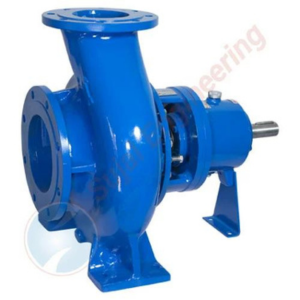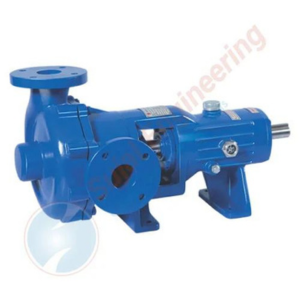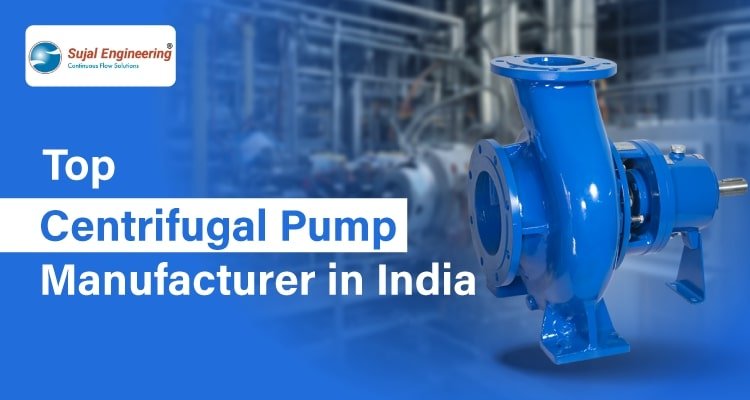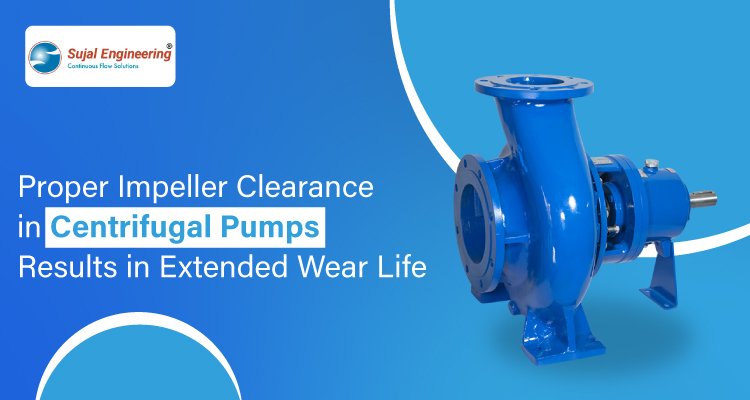A Simple Guide To Life Cycle Cost Analysis (LCC) Of Industrial Pumps
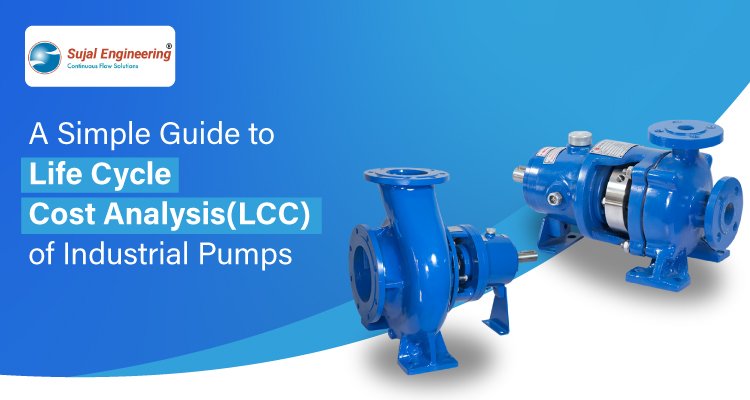
Introduction
Industrial pumps are vital in many industrial operations, but their true cost extends beyond the initial purchase price. Life cycle cost analysis (LCC) of industrial pumps takes a comprehensive approach, considering all the expenses associated with a pump, throughout its lifespan, from installation to disposal.
This guide will provide a simplified explanation of LCC for industrial pumps, highlighting the key factors to consider and the benefits it offers in making informed purchasing decisions.
Operation of Industrial Pumps
Industrial pumps tirelessly move fluids from one place to another. But how exactly do they achieve this seemingly simple task?
At its heart, an industrial pump is a machine that transforms mechanical energy, typically from an electric motor, into hydraulic energy for the fluid. This essentially means the pump takes the rotational force from the motor and uses it to create movement and pressure within the fluid.
Pumps work by creating a pressure difference between the inlet (where the fluid enters) and the outlet (where the fluid exits). This pressure difference forces the fluid to flow from the low-pressure zone (inlet) to the high-pressure zone (outlet).
Life Cycle Cost Analysis (LCC) of Industrial Pumps
Life Cycle Cost Analysis (LCC) of industrial pumps is a methodical approach to evaluating the total cost of owning and operating a pump over its entire lifespan. This analysis takes into account various costs incurred throughout the pump’s life, including initial purchase, installation, maintenance, energy consumption, and disposal or replacement costs.
The formula used in Life Cycle Costing (LCC) helps estimate the total cost of ownership for an asset across its entire lifespan. Here’s the breakdown:
LCC= Cic + Cin + Ce +Co + Cm + Cs + Cenv + Cd
Where;
Cic: Initial Cost (Purchase Cost) of the pump.
Cin: Installation Costs, including expenses for labor, piping, electrical connections, and any necessary modifications.
Ce: Energy Costs over the operational life of the pump. This typically includes electricity or fuel costs required to run the pump.
Co: Operating Costs, which encompass various expenses such as maintenance, repairs, and spare parts needed to keep the pump operational.
Cm: Maintenance Costs specifically, which may include routine maintenance activities and any corrective maintenance needed.
Cs: Downtime Costs associated with any production losses or operational interruptions due to pump failures or maintenance.
Cenv: Environmental Costs, if applicable, such as costs related to environmental impact assessments, compliance, or remediation.
Cd: Disposal Costs, including the cost of decommissioning and disposing of the pump at the end of its life cycle.
Components of Life Cycle Cost Analysis (LCC)
1. Initial Purchase Cost
This includes the initial price of the pump itself, along with any additional costs for accessories or customization required for installation.
2. Installation and Commissioning Costs
Costs associated with site preparation, piping, electrical connections, and any labor required to install and commission the pump.
3. Operating Costs
- Energy Costs: Evaluate the energy efficiency of the pump and estimate energy consumption based on operational parameters (flow rate, head, duty cycle).
- Maintenance Costs: Predict maintenance costs over the pump’s lifespan, including routine maintenance (like lubrication, and seal replacement) and potential repairs.
- Spare Parts: Estimate costs for spare parts and their replacement frequency.
4. Downtime and Reliability Costs
Consider potential costs associated with pump downtime, including lost production, emergency repair costs, and potential damage to other equipment in the system.
5. Disposal or Salvage Costs
Assess costs related to disposal at the end of the pump’s life, including environmental disposal fees or salvage value if the pump can be refurbished or resold.
Steps in Conducting Life Cycle Cost Analysis (LCC) of Industrial Pumps
1. Define the Scope and Parameters
Identify the specific pump system being analyzed, including its expected operational conditions, duty cycle, and lifespan.
2. Gather Data
Collect relevant data on initial purchase costs, installation costs, energy consumption rates, maintenance schedules, and historical maintenance and repair data.
3. Calculate Costs
Estimate energy costs based on anticipated usage patterns and local energy prices.
Use historical data or manufacturer recommendations to estimate maintenance costs and potential downtime costs.
4. Discounting and Present Value
Apply discounting techniques to adjust future costs and benefits to their present value, accounting for the time value of money.
5. Compare Alternatives
Evaluate different pump options or configurations to determine which offers the lowest total life cycle cost.
6. Consider Non-Monetary Factors
Assess qualitative factors such as reliability, vendor support, and environmental impact alongside the monetary costs.
Why Should Organisations Care About the Life Cycle Cost Analysis (LCC) of Industrial Pumps?
Only considering the initial purchase and installation cost won’t benefit your organization in the long term. Performing a Life Cycle Cost Analysis (LCC) of industrial pumps before making purchasing decisions can greatly benefit your organization.
The initial purchase price of a pump typically represents only a small fraction (around 10%) of its total cost over its lifespan [2]. LCC analysis considers the entire lifecycle, including acquisition, installation, operation (energy use), maintenance, repair, downtime, and even disposal costs. This provides a more accurate picture of the pump’s financial impact on overall operations.
By understanding the breakdown of costs, organizations can make better choices.
LCC analysis highlights areas where significant cost savings can be achieved. Maintenance, repair, and energy consumption are prime targets. By choosing pumps with lower maintenance requirements and higher efficiency, organizations can minimize ongoing expenses.
Focusing on energy-efficient pumps through LCC analysis aligns with sustainability goals. Lower energy consumption translates to reduced environmental impact.
LCC of industrial pump analysis equips organizations with valuable insights to make informed choices about industrial pumps. It helps them achieve a balance between upfront costs and long-term financial benefits, while also promoting operational efficiency and environmental responsibility.
Benefits of Life Cycle Cost Analysis (LCC) of Industrial Pumps
Life Cycle Cost Analysis (LCC) of industrial pumps offers several benefits when it comes to industrial pumps. Here’s how LCC analysis can help you make informed decisions:
- Cost Savings
LCC goes beyond the initial purchase price, considering the entire lifespan of the pump. This helps identify areas for potential cost reduction. For instance, a pump with a higher initial cost but superior energy efficiency might save you more on electricity bills over time. Similarly, a pump with lower maintenance needs could outweigh a slightly cheaper option with frequent maintenance requirements.
- Informed Decision Making
LCC analysis provides a broader perspective on pump selection. By considering all costs involved, you can choose a pump that best suits your needs and budget. This is especially useful when comparing different pump options or overhaul vs replacement decisions.
- Reduced Downtime
LCC analysis helps identify factors that contribute to downtime, such as maintenance schedules and unexpected failures. By proactively addressing these factors, you can minimize downtime and ensure smooth operation.
- Improved Efficiency
LCC analysis encourages focusing on a pump’s efficiency throughout its lifecycle. This can lead to selecting pumps with features like better materials or designs that optimize energy usage and reduce operating costs.
- Environmental Impact
LCC analysis can consider factors like disposal and environmental regulations. Choosing a pump with lower energy consumption and easier decommissioning can contribute to a more sustainable operation.
Minimize Industrial Pumps Costs with Sujal Engineering
By conducting a thorough Life Cycle Cost Analysis (LCC) of industrial pumps, industrial facilities can make well-informed decisions that align with their operational and financial goals, ultimately optimizing pump performance and reducing overall costs throughout the equipment’s life cycle.
We, Sujal Engineering are a top industrial pump manufacturer in India, ensuring to provide effective and cost-minimized pumping solutions to various industrial applications. Put our most reliable industrial pumps at the heart of your industrial operations.
Add why should company care about LCC?


